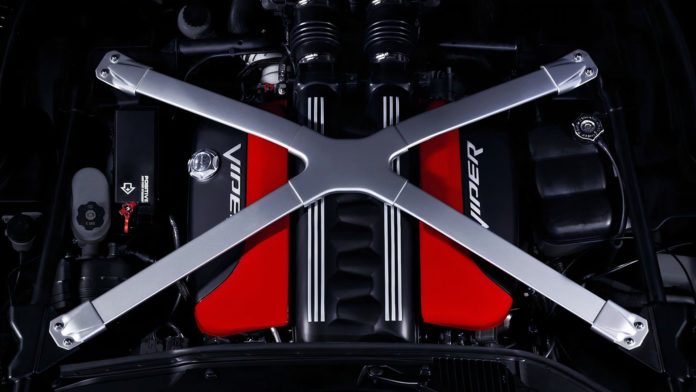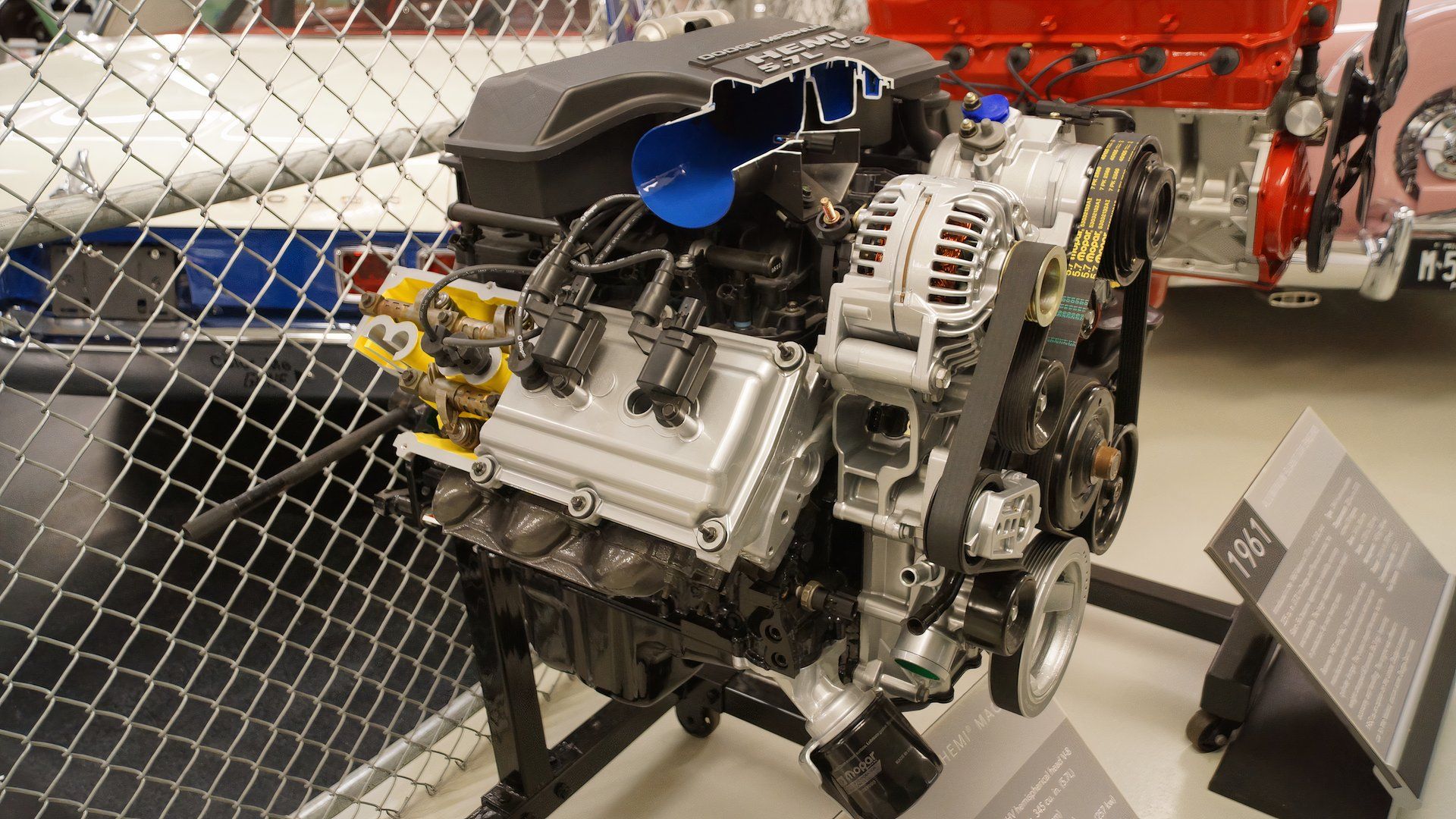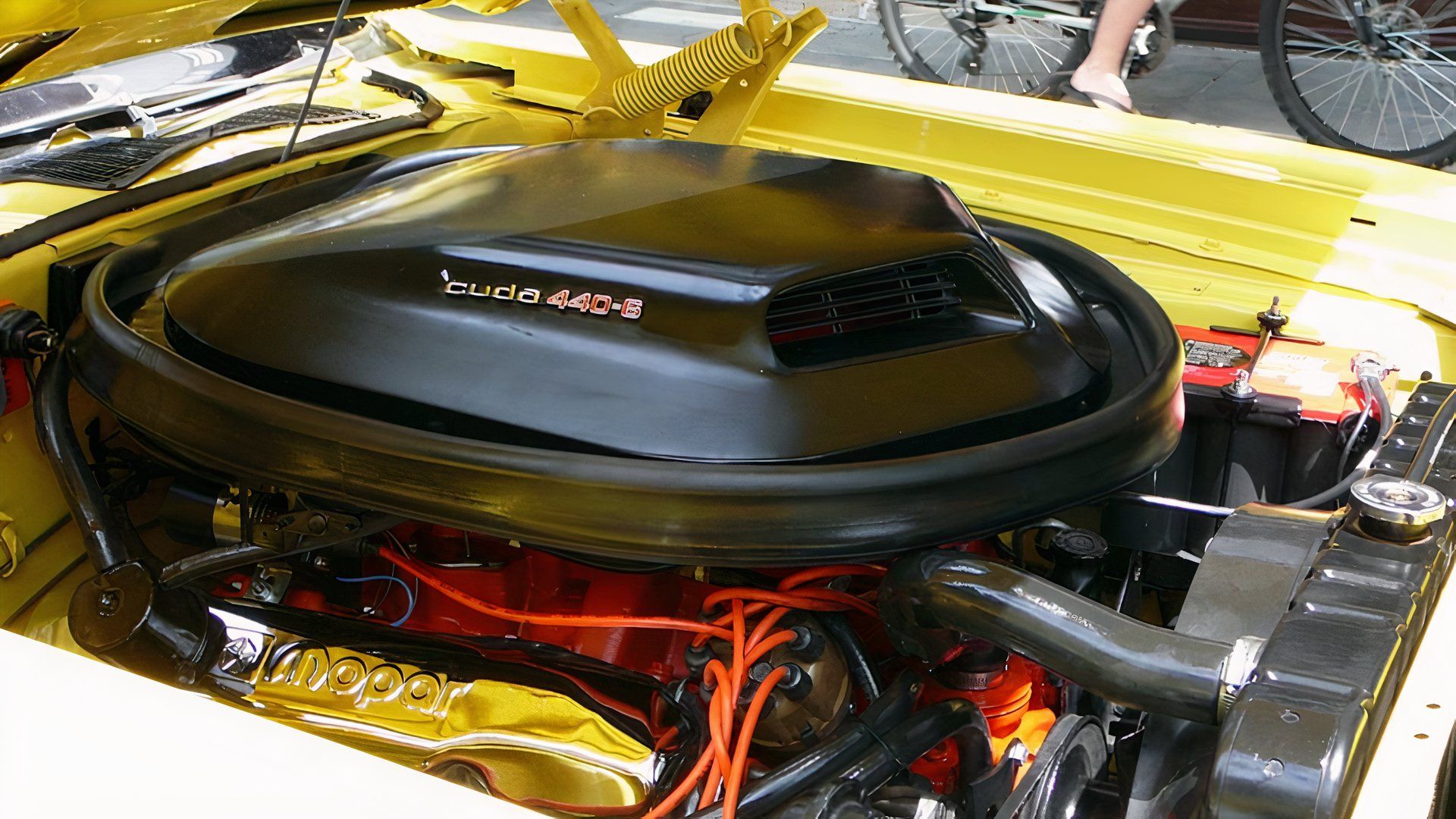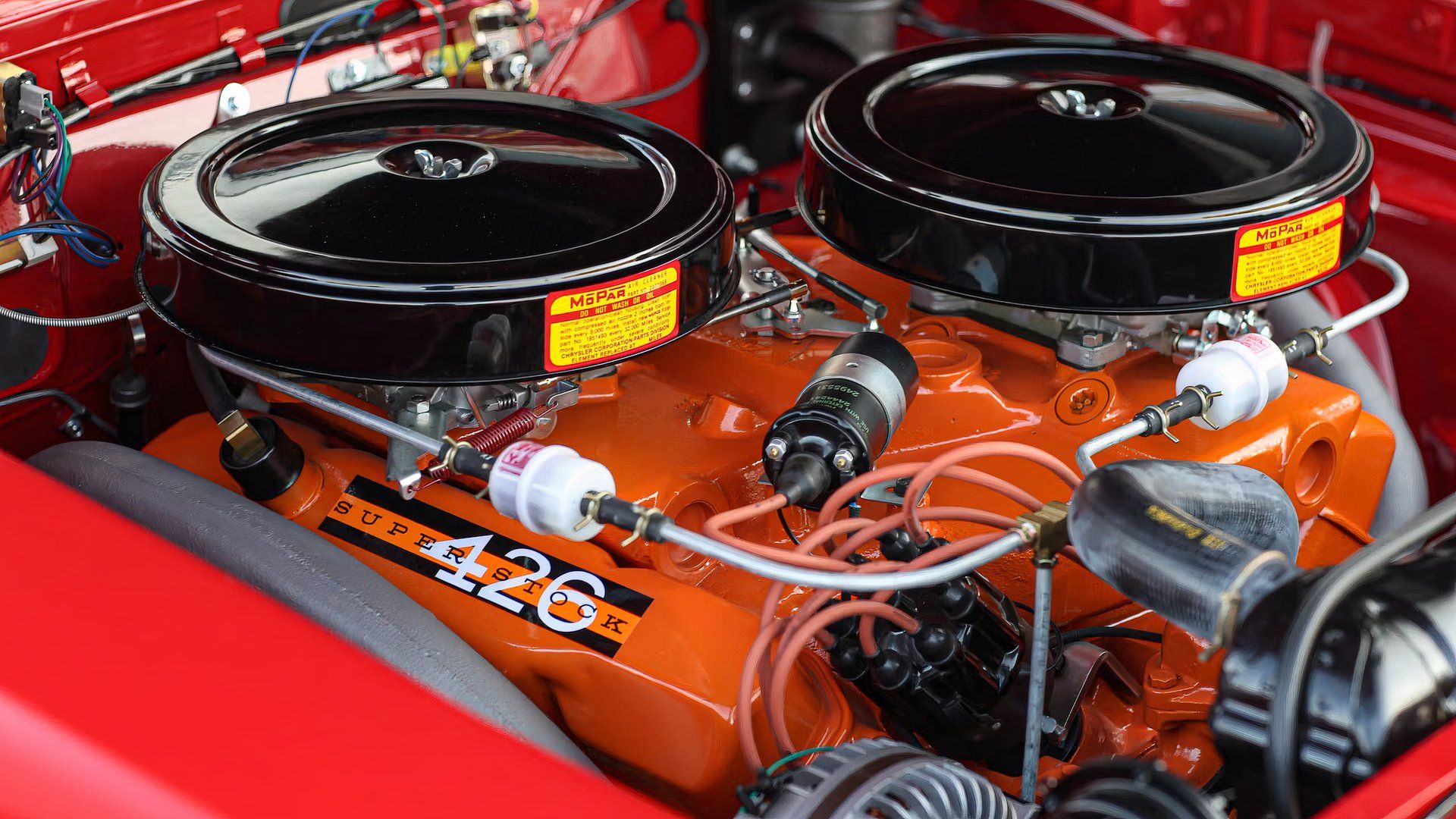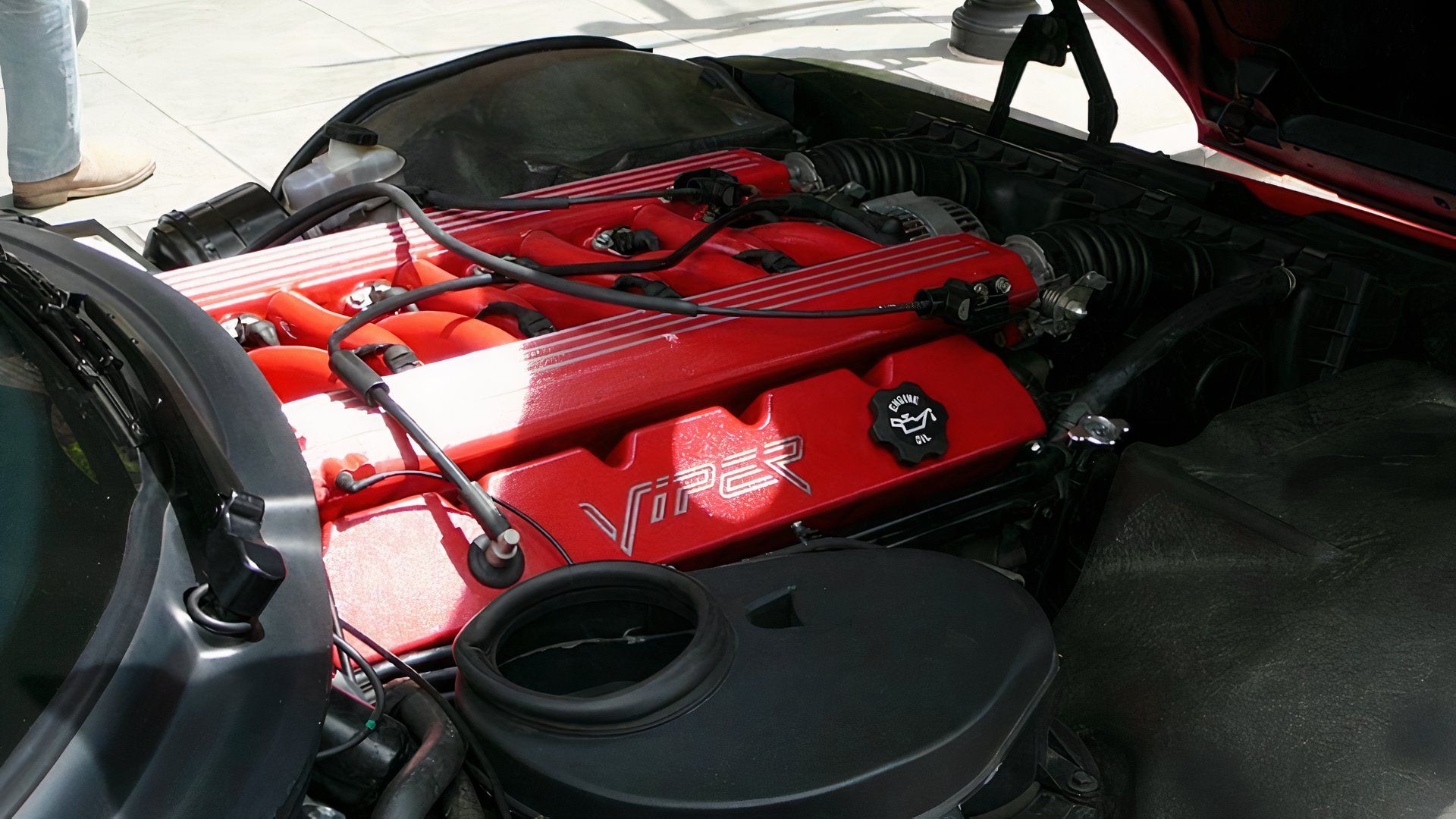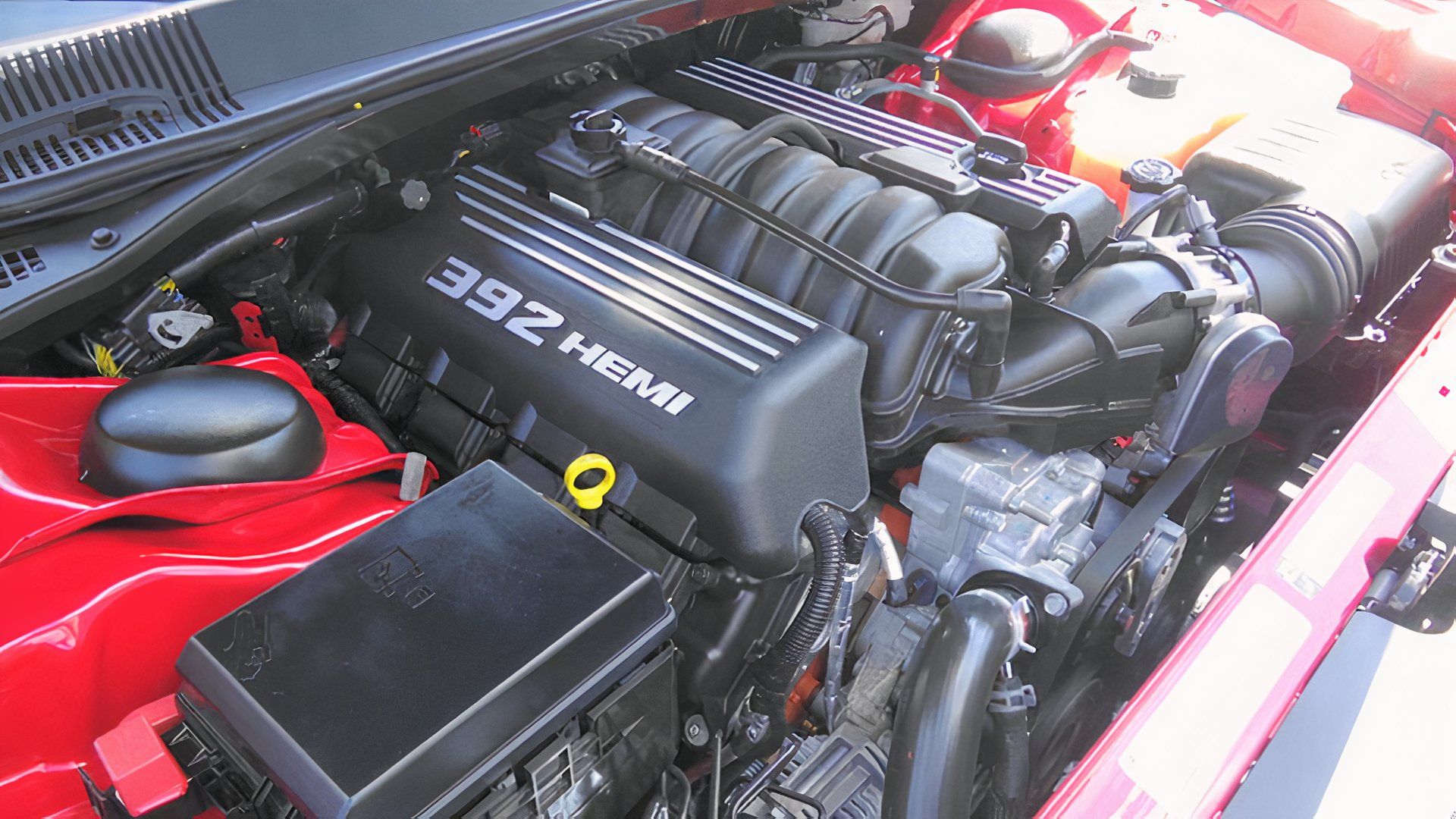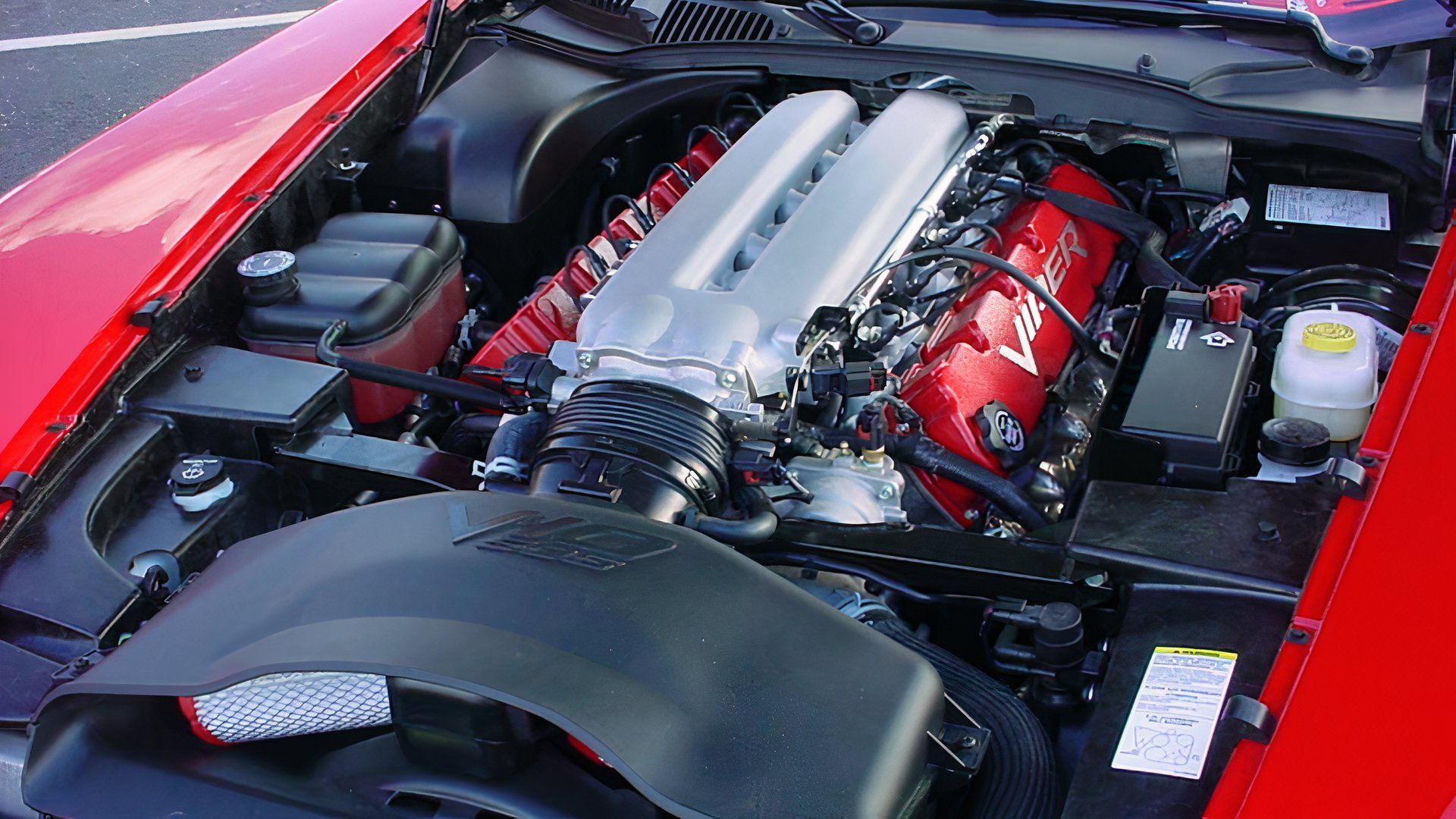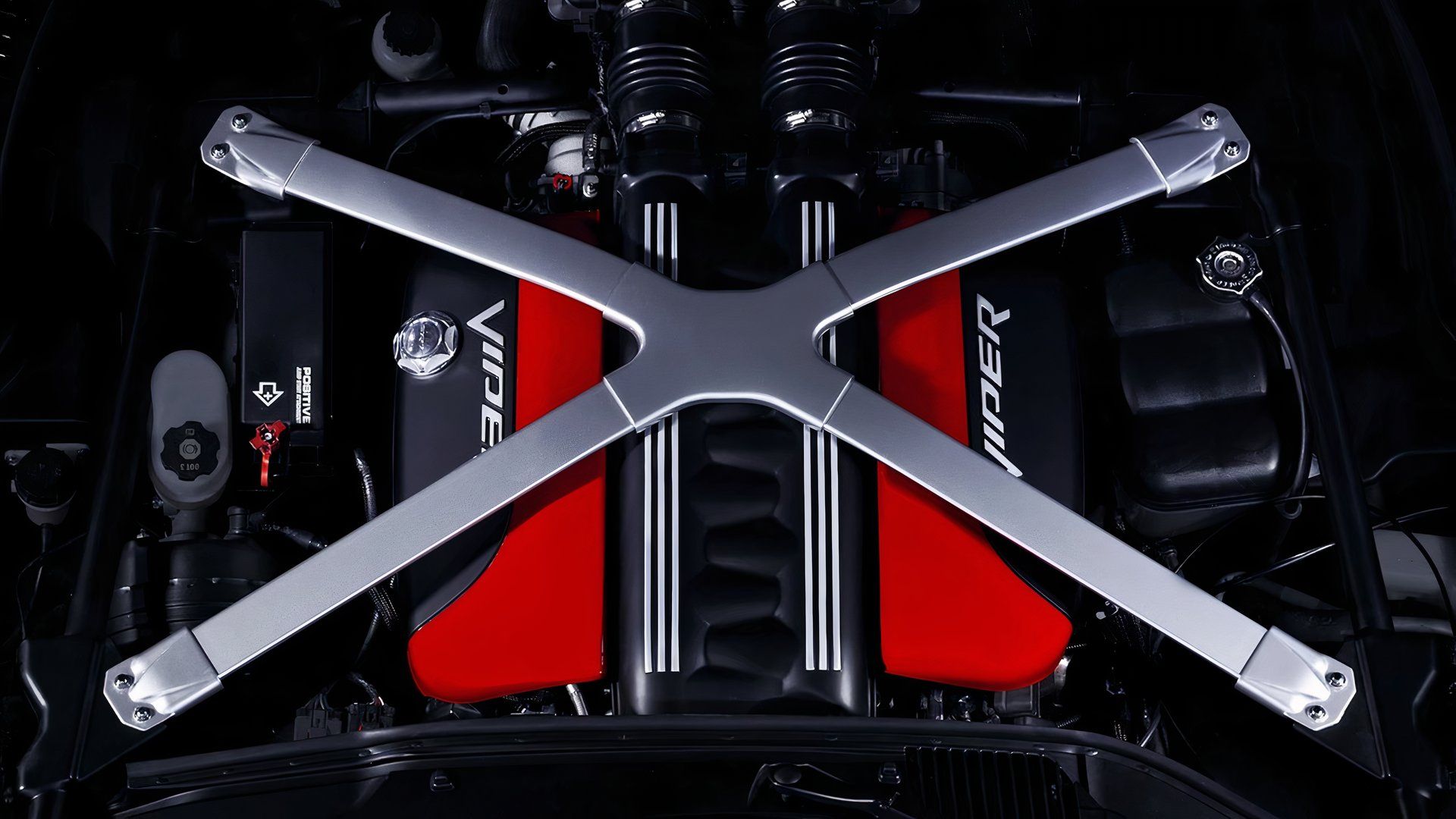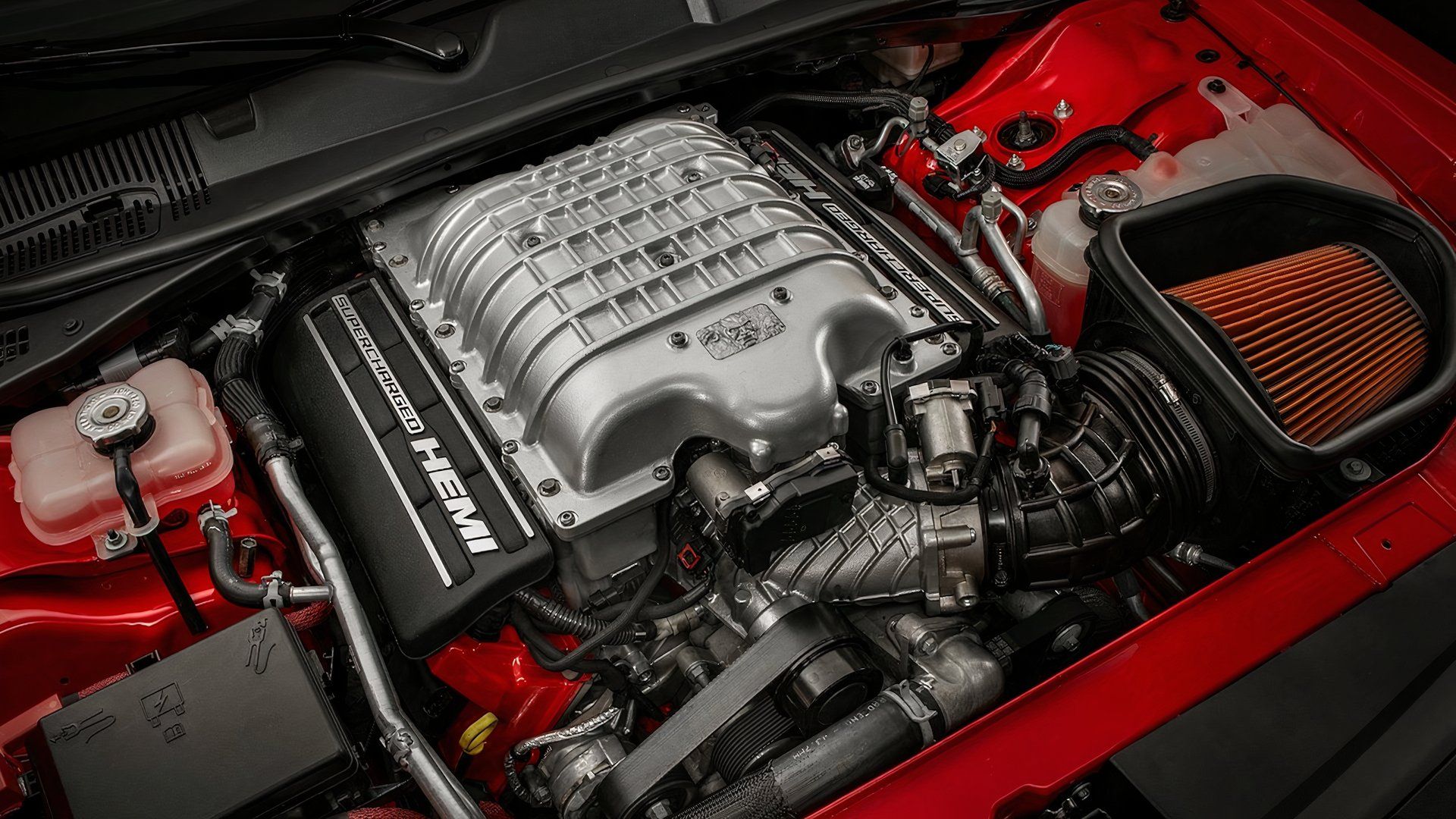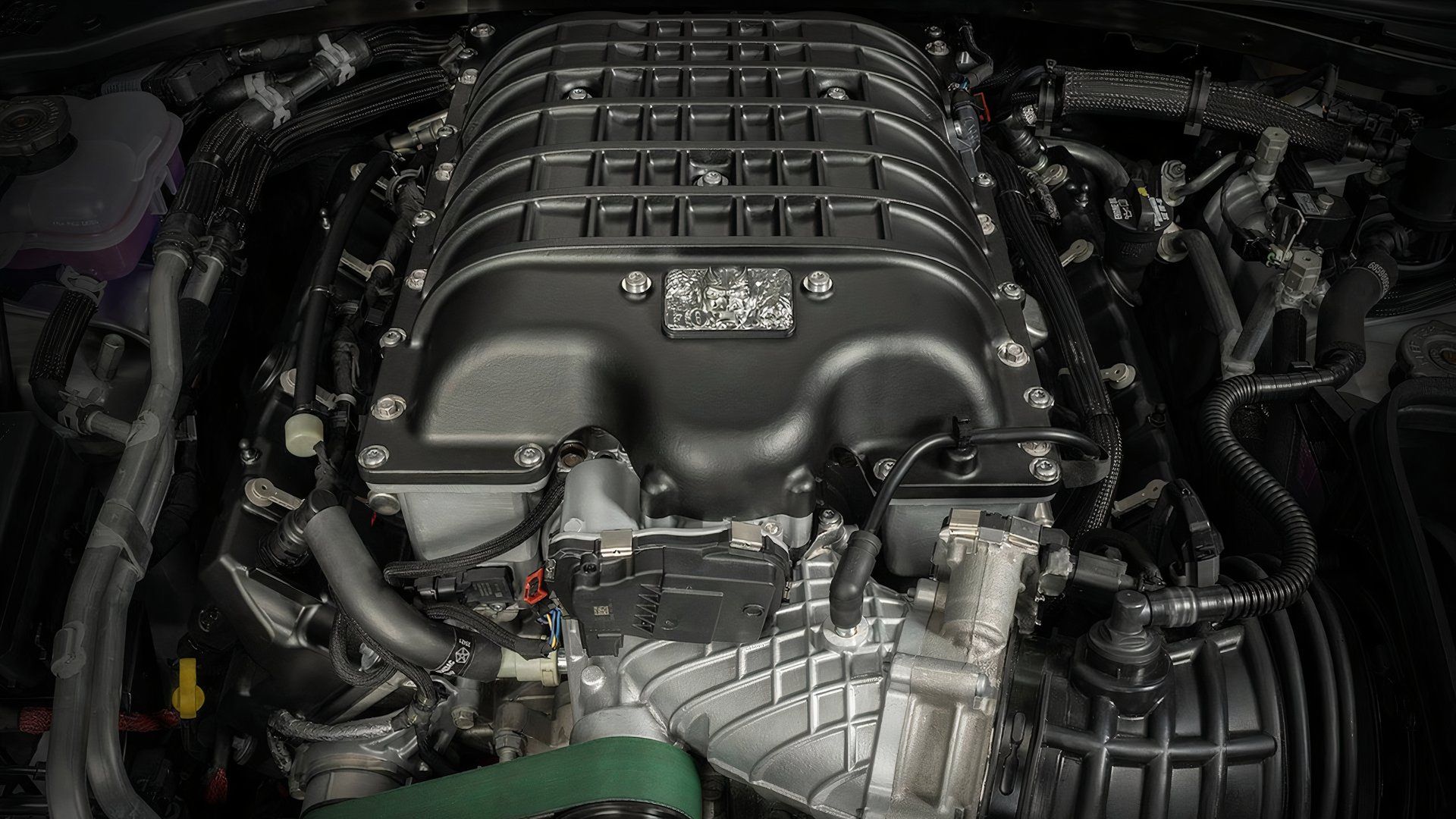Dodge is one of the cornerstone muscle car brands and, in its 124-year-long history, has produced spectacular engines. In the modern era, Dodge is fully entrenched in electrification and downsizing, with its venerable Charger and Challenger losing their hulking V8s and subsequently being laid to rest. Only the Charger will continue to exist, but only with an inline six-cylinder Hurricrane engine as the sole supplier of power. Another one of Dodge’s powertrain ventures is focused on electric mobility, with the Dodge Charger Daytona poised as the torchbearer for the firm’s all-electric performance-oriented aspirations.
The automaker’s involvement with high-horsepower brutish V8 engines is most likely behind them, with a new chapter of mobility in their sights. That said, there is no shortage of potent and power-laden engines littered within its history. Here are some of the most powerful engines the manufacturer has ever developed and utilized.
Only engines used in road-going vehicles were selected for this list and engines that were utilized by one or more Dodge models. So engines like the handful offered under the Dodge Connection moniker will not appear on this list, even though some are capable of outputting 1,500hp.
10 354 FirePower V8
340 hp
|
Engine type |
V8 |
|---|---|
|
Displacement |
5.8-liter/ 354 cubic inches |
|
Horsepower |
340 hp |
|
Torque |
395 lb-ft |
|
Application |
Dodge D-501 Coronet |
In 1957, Chrysler would employ the FirePower V8 engine that had been previously used by the 1956 Chrysler 300B, which would be utilized in the fourth-generation D-501, although featuring a few alterations. Camshafts from the Chrysler 6.4-liter V8 were utilized in the FirePower V8. This engine also employed a pair of Carter four-barrel carburetors that achieved 340 hp with the help of a 10.0:1 compression ratio.
9 5.7L HEMI V8
375 hp
|
Engine type |
V8 |
|---|---|
|
Displacement |
5.7-liter/ 345 cubic inches |
|
Horsepower |
375 hp |
|
Torque |
410 lb-ft |
|
Application |
Dodge Charger, Dodge Challenger |
As the name would suggest, this particular engine was a member of the HEMI engine family and first appeared in 2003. The third generation Hemi engine consisted of a cast iron engine block accompanied by aluminum cylinder heads. It was used to power several models across the Dodge, Ram, Chrysler, and Jeep fleets, with some of the notable uses being the 2005 Dodge Magnum R/T, 2006 Dodge Charger R/T, and the 2009 Dodge Challenger R/T.
8 440 SixPack V8
390 hp
|
Engine type |
V8 |
|---|---|
|
Displacement |
7.2-liter/ 440 cubic inch |
|
Horsepower |
390 hp |
|
Torque |
490 lb-ft |
|
Application |
Dodge Challenger R/T, Dodge Charger R/T, Dodge Super Bee |
The SixPack, also offered by Plymouth under the “Six-Barrel” moniker, was introduced in 1969 and is one of the most iconic engines in the firm’s history. The engine was offered as an option for the Charger R/T in 1970 and was the most powerful configuration offered by Dodge at the time within the 440 engine family. Compared to the 440 Magnum engine it superseded, the 440 SixPack featured a cast-iron engine block, three two-barrel carburetors, stronger connecting rods, revised camshaft profiles, an increased compression ratio to 10.5:1, and better pistons. Later versions of the engine would receive a new exhaust manifold, but the engine was retired in 1978.
7 426 MaxWedge V8
425 hp
|
Engine type |
V8 |
|---|---|
|
Displacement |
7.0-liters / 426 cubic inches |
|
Horsepower |
425 hp |
|
Torque |
480 lb-ft |
|
Application |
Dodge Coronet, Dodge Charger, Dodge Dart Super Stock |
The 426 was a descendant of the first-generation Hemi engine, which debuted in 1951 under the FirePower moniker. The engine line would go on to be offered in various configurations over the years, but the big block production-ready 426 would only debut in 1964 and was the first HEMI engine offered by Chrysler, branded the 426 Wedge, because of the wedge-shaped combustion chambers. The engine was not originally intended for road-going applications and instead was initially supposed to power racing cars, specifically NASCAR.

Add CarBuzz to your Google News feed.
6 1996 Viper GTS V10
450 hp
|
Engine Type |
V10 |
|---|---|
|
Displacement |
8.0-liters/ 487.6 cubic inches |
|
Horsepower |
450 hp |
|
Torque |
490 lb-ft |
|
Application |
1st-generation Dodge Viper |
The Dodge Viper is one of the most unique offerings ever developed in the firm’s history and is one of the few Dodge models to utilize a V10 engine. The first generation Viper utilized an 8.0-liter naturally aspirated V10 developed by Lamborghini, which was owned by Chrysler at the time, and based on the LA V8 engine. The first generation version of this engine would produce a maximum output of 400 hp, but in the second generation, the output would increase to 450 hp and the engine would receive forged pistons in 1999.
5 392 Apache V8
485 hp
|
Engine type |
V8 |
|---|---|
|
Displacement |
6.4-liters/ 392 cubic inches |
|
Horsepower |
485 hp |
|
Torque |
475 lb-ft |
|
Application |
DodgeChallenger SRT, Dodge Durango SRT-8 |
The 392 Apache V8 was introduced in 2011 at the core of the Challenger SRT and is still employed in the most recent Durango SRT model today. Nicknamed the “Apache”, the HEMI engine shares some components used by the 392 crate engine and was based on the architecture of the third-generation 5.7-liter HEMI engine, also known as the “Eagle”.
4 2nd-gen Viper V10
600 hp
|
Engine type |
V10 |
|---|---|
|
Displacement |
8.3-liters/ 505.6 cubic inches |
|
Horsepower |
600 hp |
|
Torque |
560 lb-ft |
|
Application |
2nd-gen Viper |
This was the third-generation rendition of the V10, which saw an increase in its displacement from 8.0 liters to 8.3 liters, which saw its bore and stroke grow to 102.4 mm x 100.6 mm. Compared to the previous 8.0-liter V10, this 8.3-liter power unit was made lighter, tipping the scales at 500 lb. This engine would be the foundation for the most potent V10 to ever be used in a Dodge Viper. The output would begin at 500 hp but would later be increased to 600 hp by way of upgraded engine internals like better air flow, larger valves, and variable valve timing to name a few.
3 Viper SRT V10
645 hp
|
Engine type |
V10 |
|---|---|
|
Displacement |
8.4-liters/ 511.5 cubic inches |
|
Horsepower |
645 hp |
|
Torque |
600 lb-ft |
|
Application |
Dodge Viper SRT |
This was the final power plant used in the Viper bloodline and was the most potent. Unlike the previous V10 Viper engines, the final V10 was all-aluminum, featuring forged pistons, and had a displacement of 8.4 liters. Peak power was made available at 6,150 rpm and peak torque at 4,950 rpm. Due to the Viper being unable to conform to the Federal Motor Vehicle Safety Standard 226, the Viper’s lineage ended in 2017.
2 6.2 HEMI V8
807 hp
|
Engine type |
V8 |
|---|---|
|
Displacement |
6.2-liters/ 376 cubic inches |
|
Horsepower |
807 hp |
|
Torque |
707 lb-ft |
|
Displacement |
Dodge Challenger |
One of the most prolific engines used by Dodge, not only in recent years but also in its lengthy history. The supercharged whine of the High-Output HEMI V8 has been the cornerstone of the driving experience of the Dodge Challenger and Charger. The HEMI V8 consists of an iron engine block mated to aluminum cylinder heads, whose thirst is quenched by port fuel injection. This potent power plant also served as the skeleton of the more potent Hellcrate engines that would follow.
1 6.2 HEMI V8
1,025 hp
|
Engine type |
V8 |
|---|---|
|
Displacement |
6.2-liter/ 376 cubic inches |
|
Horsepower |
1,025 hp |
|
Torque |
945 lb-ft |
|
Application |
Dodge Challenger SRT Demon 170 |
Arguably the high point in Dodge’s history, in terms of raw power output. The Demon 170 is one of, if not, the most powerful muscle cars ever to be available in the US. Its D170 engine was based on the Hellephant C170 engine and featured a slew of upgraded engine internals such as the crankshaft, rod bearings, an upgraded supercharger pulley, high-flow injectors, upgraded valve guides, and cylinder head studs. One of the key features, and main contributors to the overall power, of the power-laden V8 is the modified 3.0 liter supercharger. Dodge is proud of their powerful Demon for good reason, as it is the first factory muscle car capable of completing a 1/4-mile sprint in eight seconds, evoking 2Gs of force while doing so.
Sources:
Dodge
,
HotCars
,
Car and Driver

